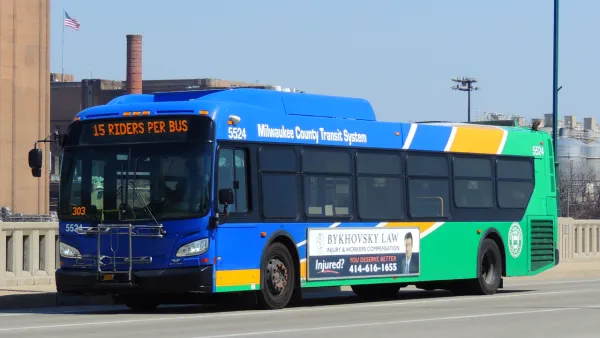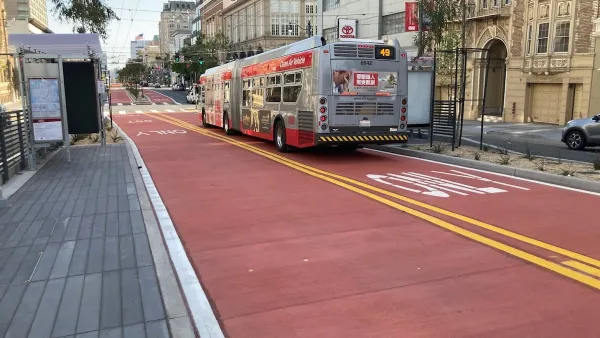In the '90s, Keanu Reeves was hurtling down the roads and freeways of L.A. in a bus; 25 years later, city officials ponder ways to bring the city’s average bus speed above 10 mph.
A lot has changed since the 1994 premiere of Speed, but the big blue buses are still operating. The premise of the movie is that a bomb planted on one of these buses is armed when the bus hits 50 mph, and will detonate if the bus drops below that speed. The plot was always far-fetched, but today, "It’s difficult to envision any vehicle, let alone a bus, reaching and sustaining 50 miles per hour at 8:30 a.m. on the 10 freeway," Elijah Chiland writes for Curbed.
In the quarter century since the film came out, average bus speed in that corridor is down about 3 mph, and costs are up. The buses that serve Santa Monica face worse traffic today than they did in the Speed-era. "As Virginia-based transit analyst Mobility Lab points out, bus riders are generally most impacted by worsening congestion, since even slight delays can create a domino effect that makes buses run behind schedule for much of the day," Chiland reports. When bus routes take longer, it means each vehicle can run the route fewer times. "Bus schedules don’t change when there’s bad traffic, so in order to ensure on-time arrivals, agencies must add more buses to a route as regional congestion worsens," Chiland writes.
The city could address the issue with a congestion pricing scheme or bus rapid transit (BRT) lanes, but neither is an easy sell politically. Though there are already some BRT lanes in the city, BRT works best where there’s already congestion, so while taking away a traffic lane can anger some drivers, asking them to pay congestion pricing can have the same effect. The other option is to let service quality on these buses continue to decline. So far that's the option the city has taken.
FULL STORY: 25 years after ‘Speed,’ can LA get its buses moving again?

Analysis: Cybertruck Fatality Rate Far Exceeds That of Ford Pinto
The Tesla Cybertruck was recalled seven times last year.

National Parks Layoffs Will Cause Communities to Lose Billions
Thousands of essential park workers were laid off this week, just before the busy spring break season.

Retro-silient?: America’s First “Eco-burb,” The Woodlands Turns 50
A master-planned community north of Houston offers lessons on green infrastructure and resilient design, but falls short of its founder’s lofty affordability and walkability goals.

Test News Post 1
This is a summary

Analysis: Cybertruck Fatality Rate Far Exceeds That of Ford Pinto
The Tesla Cybertruck was recalled seven times last year.

Test News Headline 46
Test for the image on the front page.
Urban Design for Planners 1: Software Tools
This six-course series explores essential urban design concepts using open source software and equips planners with the tools they need to participate fully in the urban design process.
Planning for Universal Design
Learn the tools for implementing Universal Design in planning regulations.
EMC Planning Group, Inc.
Planetizen
Planetizen
Mpact (formerly Rail~Volution)
Great Falls Development Authority, Inc.
HUDs Office of Policy Development and Research
NYU Wagner Graduate School of Public Service




























